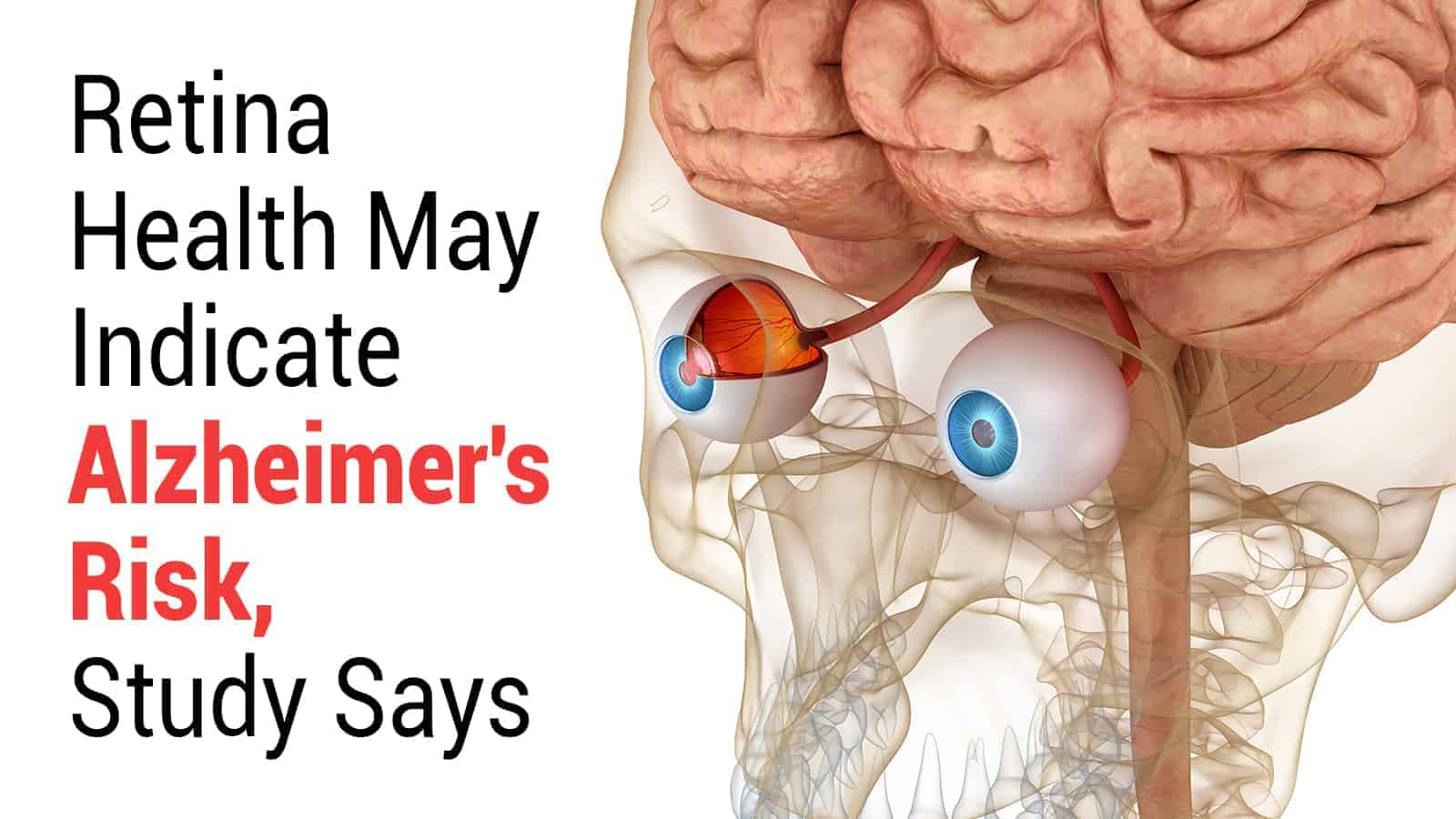A new study led by scientists at the University of California San Diego School of Medicine found that retina health may indicate Alzheimer’s risk. The research discovered that protein deposits called amyloid plaques found in the retinas might indicate similar plaques in the brain.
These protein deposits inhibit the function of brain cells and eventually cause neuronal death. Scientists have conducted prior studies on how to reduce or halt the formation of amyloid plaques, key drivers of Alzheimer’s.
These destructive plaques have also been the focus of the nationwide A4 study on anti-amyloid treatment for Alzheimer’s. The landmark study launched in 2014 assessed whether the investigational drug, solanezumab, could slow memory loss caused by the amyloid protein.
Elevated amyloid levels in the brain associated with increased Alzheimer’s risk
The study invited older individuals (ages 65-85) who have normal cognition and memory but who may be at risk for developing Alzheimer’s to participate. Researchers then used an imaging test called a PET scan with over 4,400 participants to measure amyloid buildup in the brain. The PET imaging revealed that 1,323 had elevated amyalzloid levels, making them eligible to continue with the study.
Physicians and researchers asked participants to visit the clinical research site once per month. At the beginning of the study, volunteers were given either the investigational drug or a placebo. They also completed memory tests every six months to evaluate any differences in their cognition.
The first published data from the A4 study confirms that higher amyloid levels in the brain increase Alzheimer’s risk. In fact, they represent the early stages of the disease. The research, published April 2020 in Jama Neurology, found that adults with higher amyloid levels had a family history of Alzheimer’s. They also scored lower on cognitive tests and reported a decline in daily cognitive function over the course of the study.
The A4 study marks the first of its kind to identify high amyloid levels in the brains of cognitively normal people using PET scans. It will likely set the benchmark for future research on reducing Alzheimer’s risk in people with high amyloid levels.“A4 demonstrates that prevention trials can enroll high-risk individuals — people with biomarkers for Alzheimer’s who are cognitively normal,” said Laurie Ryan, Ph.D., chief of the Dementias of Aging Branch in NIA’s Division of Neuroscience. “Ultimately, precision medicine approaches will be essential.”
“Alzheimer’s disease is never going to have a one-size-fits-all treatment,” she said. “We’re likely to need different treatments, even combinations of therapies, for different individuals based on their risk factors.”
Determining Alzheimer’s risk by retina health
A new study published in the August 17, 2021, Alzheimer’s & Dementia issue found that amyloid deposits may also form in the retinas. This often occurs in patients with a clinical diagnosis of Alzheimer’s, suggesting similar behavior of the disease in both organs.
A team of researchers led by UCSD School of Medicine scientists performed a small, cross-sectional study. The team compared retinal and brain amyloid levels in patients from the A4 and Longitudinal Evaluation of Amyloid Risk and Neurodegeneration (LEARN) studies. Participants in the latter study still had increased Alzheimer’s risk but did not have elevated amyloid. However, they still met all other A4 study eligibility criteria.
The LEARN study built upon the A4 methodology and recruited 500 clinically normal older adults. The research provides a crucial comparison group for the A4 placebo group and future trials evaluating Alzheimer’s risk in asymptomatic individuals.
After gathering all the data, researchers found that individuals with retinal spots also had brain scans indicating higher cerebral amyloid. This critical scientific discovery proves that retinal imaging could serve as a biomarker to detect early-onset Alzheimer’s risk.
“This was a small initial dataset from the screening visit. It involved eight patients,” said senior author Robert Rissman, Ph.D., professor of neurosciences at UC San Diego School of Medicine and director of the Biomarker Core for the Alzheimer’s Disease Cooperative Study and Alzheimer’s Disease Research Center at UC San Diego.
He goes on to say,
“But these findings are encouraging because they suggest it may be possible to determine the onset, spread, and morphology of AD — a preclinical diagnosis — using retinal imaging, rather than more difficult and costly brain scans. We look forward to seeing the results of additional timepoint retinal scans and the impact of solanezumab (a monoclonal antibody) on retinal imaging. Unfortunately, we will need to wait to see and analyze these data when the A4 trial is completed.”
Rissman says that moving forward, they will conduct another study using a larger sample size. This way, they can confirm their initial findings and better understand the relationship between retinal and brain amyloid.
The research shows promise for the future of preclinical Alzheimer’s diagnoses. Retinal imaging techniques offer a non-invasive, less expensive method of detecting early-stage Alzheimer’s disease risk. If doctors can diagnose Alzheimer’s earlier in a more cost-effective way, it could revolutionize treatments in the future.
Natural ways to reduce Alzheimer’s risk
According to the National Institute on Aging, Alzheimer’s develops due to a combination of age-related, environmental, lifestyle, and genetic factors. While you can’t alter your genetics, you do have control over your daily habits. To prevent or reduce Alzheimer’s risk, the following tips are recommended:
- Get regular physical exercise – ideally, 2.5-3 hours of moderately intense aerobic exercise per week.
- Eat a balanced, nutritious diet. Steer clear of highly refined foods and opt for fresh, whole foods instead.
- Get plenty of sleep, and maintain a regular sleep schedule.
- Keep your mind busy and active. Read books, do brain puzzles, learn a new skill or anything else that stimulates the brain.
- Maintain a healthy social life. Positive, supportive friends can do wonders for your mental health.
Final thoughts on a new study linking retina health to Alzheimer’s risk
Alzheimer’s disease leads to the gradual death of brain cells because of disruptions in neuronal communications. As cells degenerate, it results in cognitive impairment and memory loss. A new study found that amyloid plaques, a hallmark of neurodegenerative disease, can occur in the retinas in addition to the brain. Researchers hope that non-invasive retinal scans will become the future of preclinical Alzheimer’s diagnoses.
















 Community
Community

